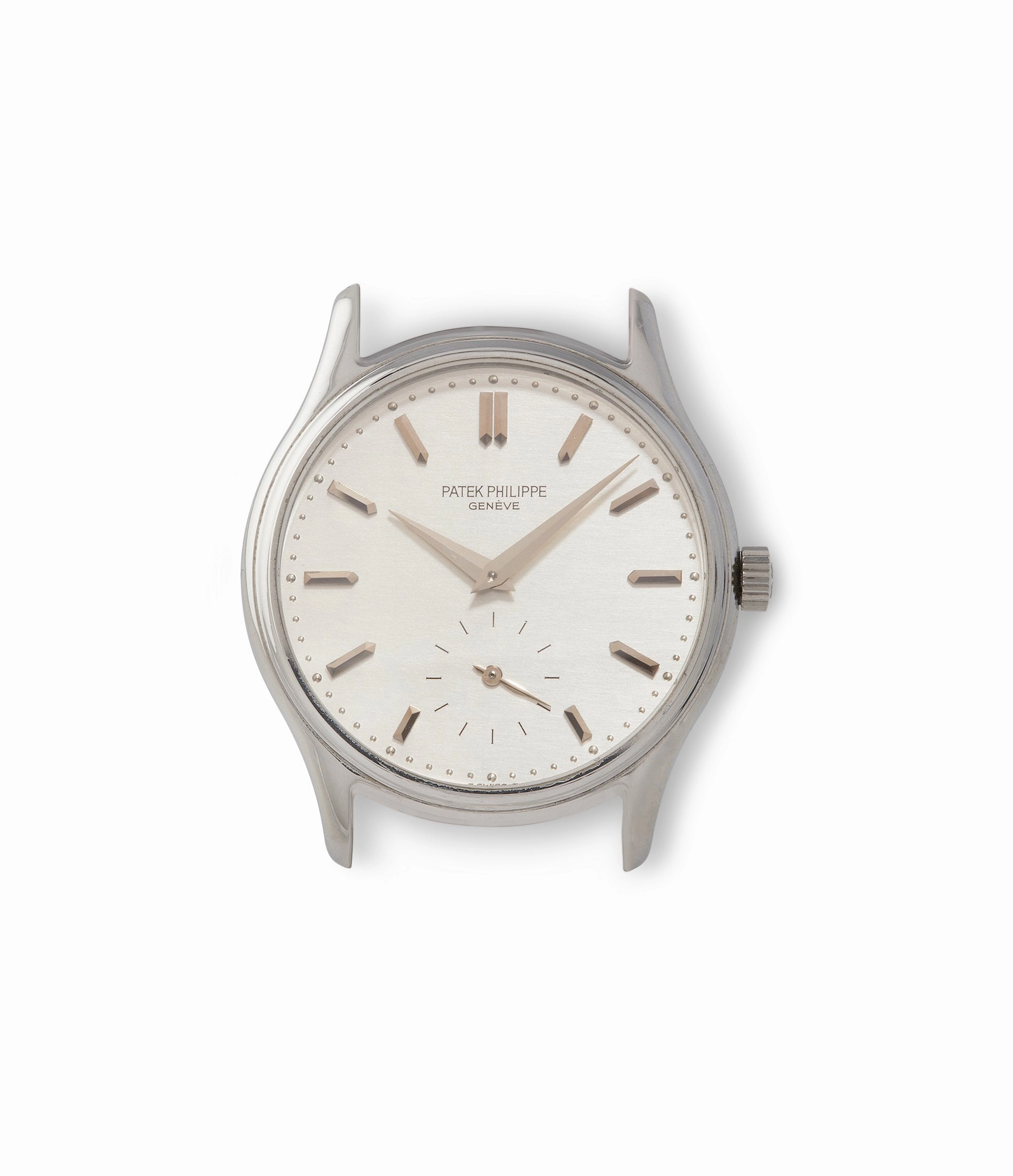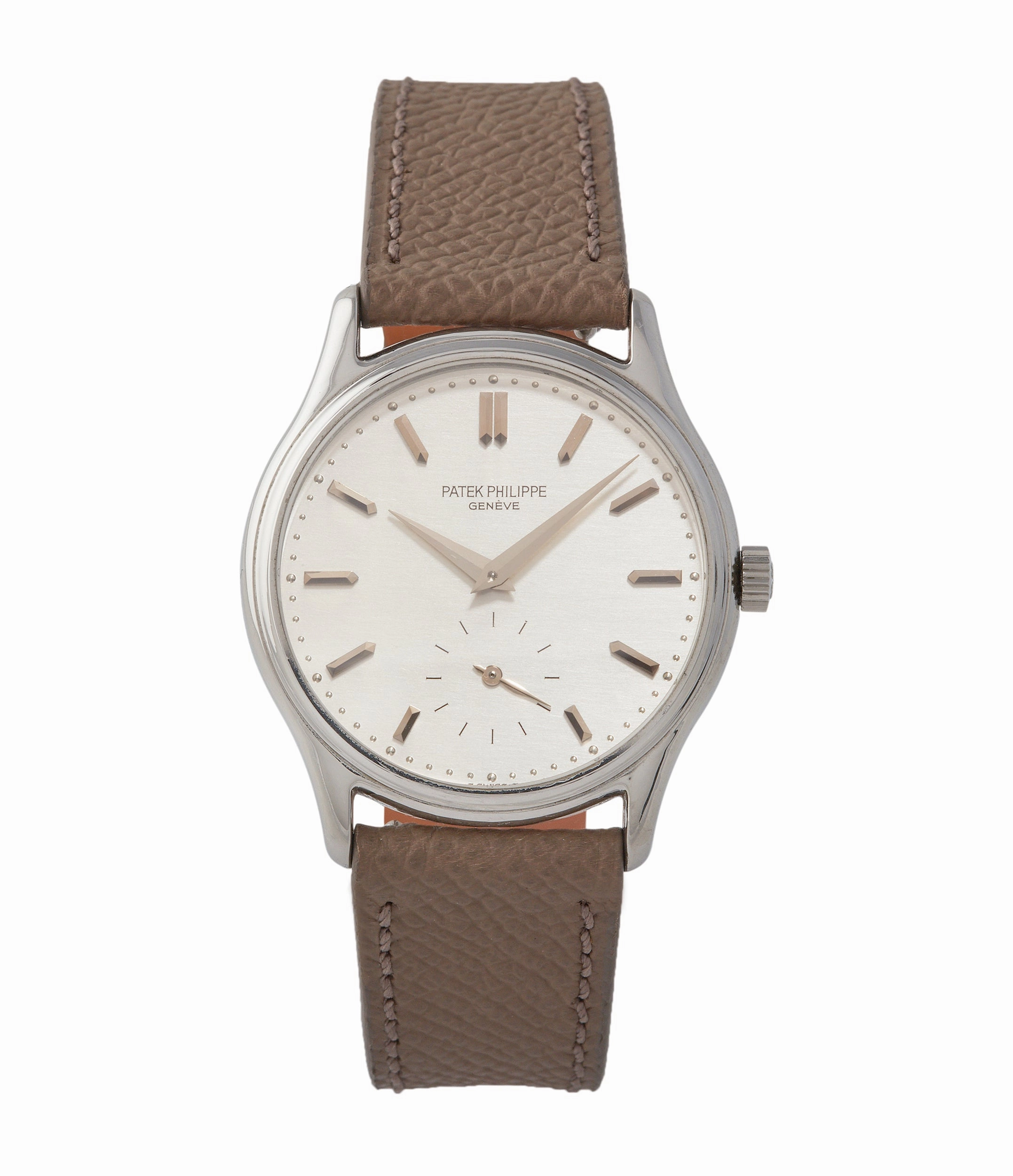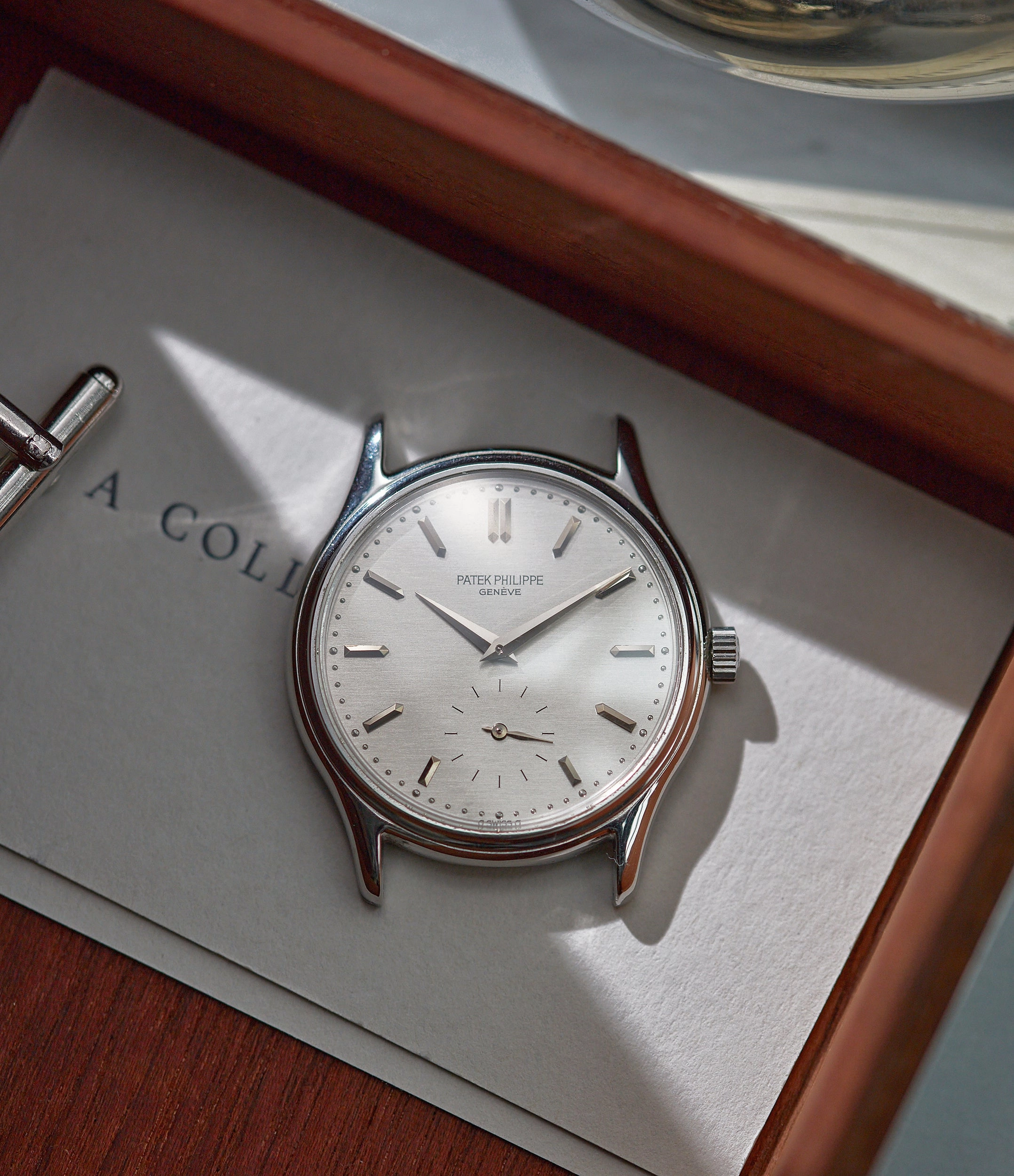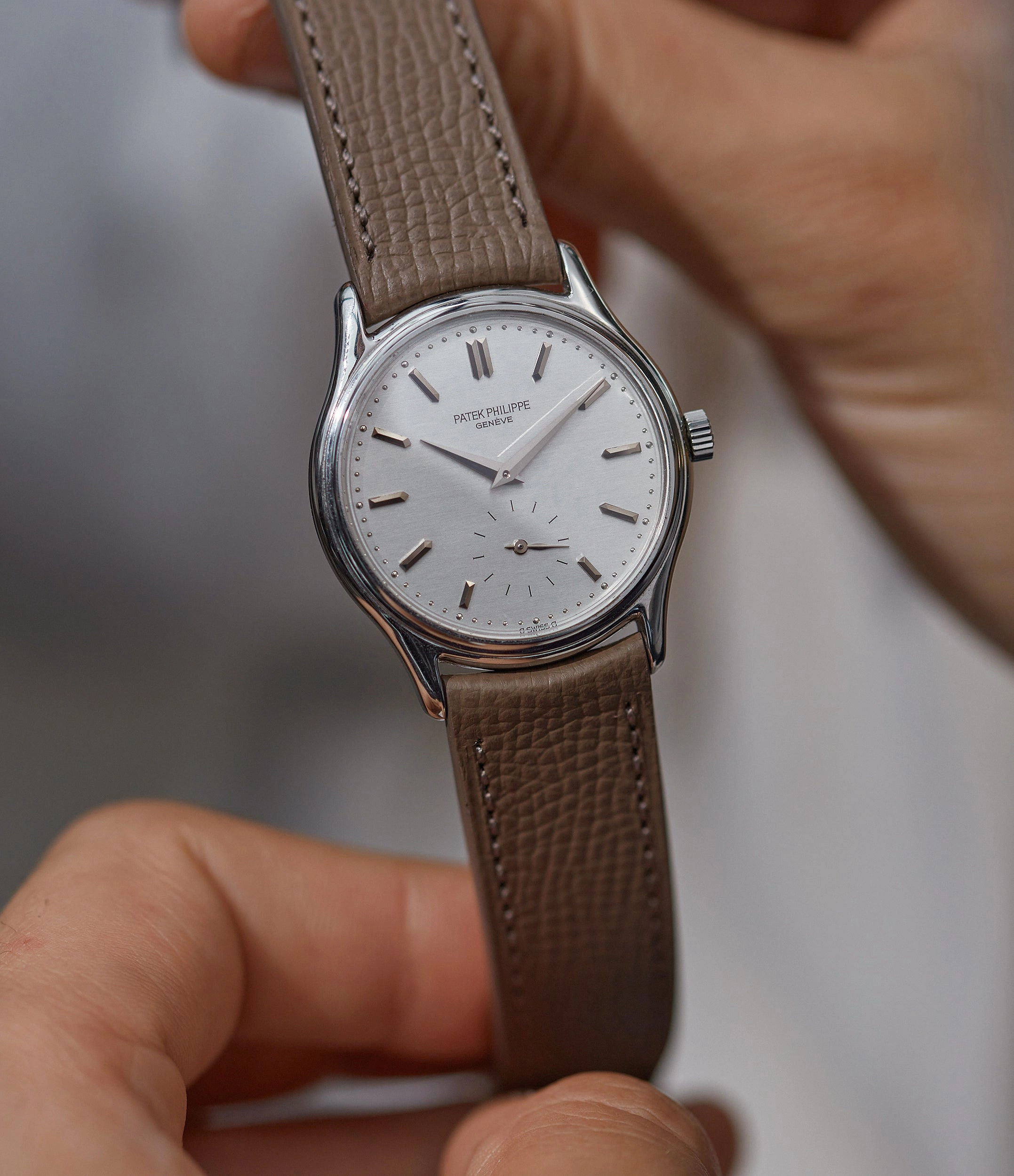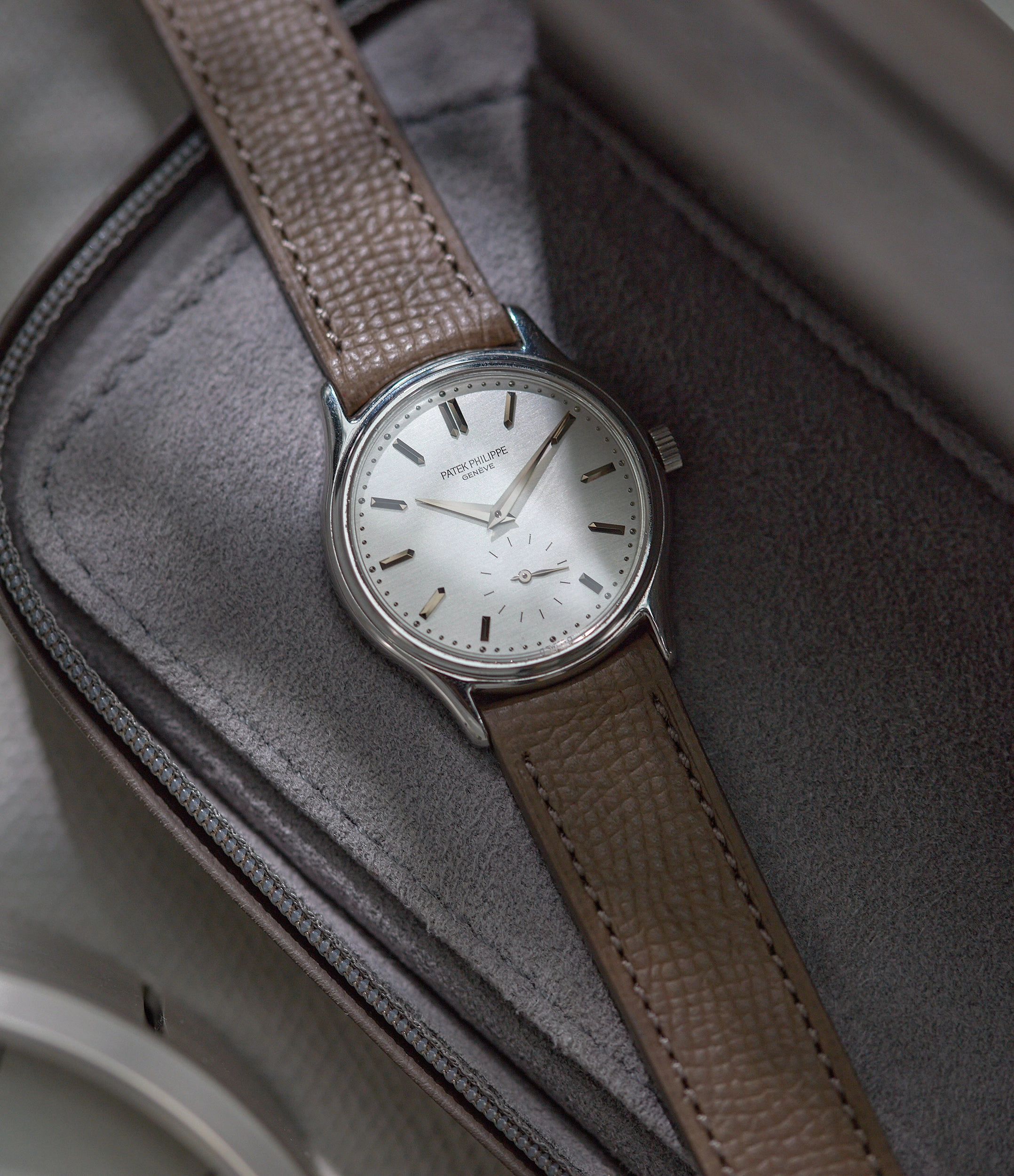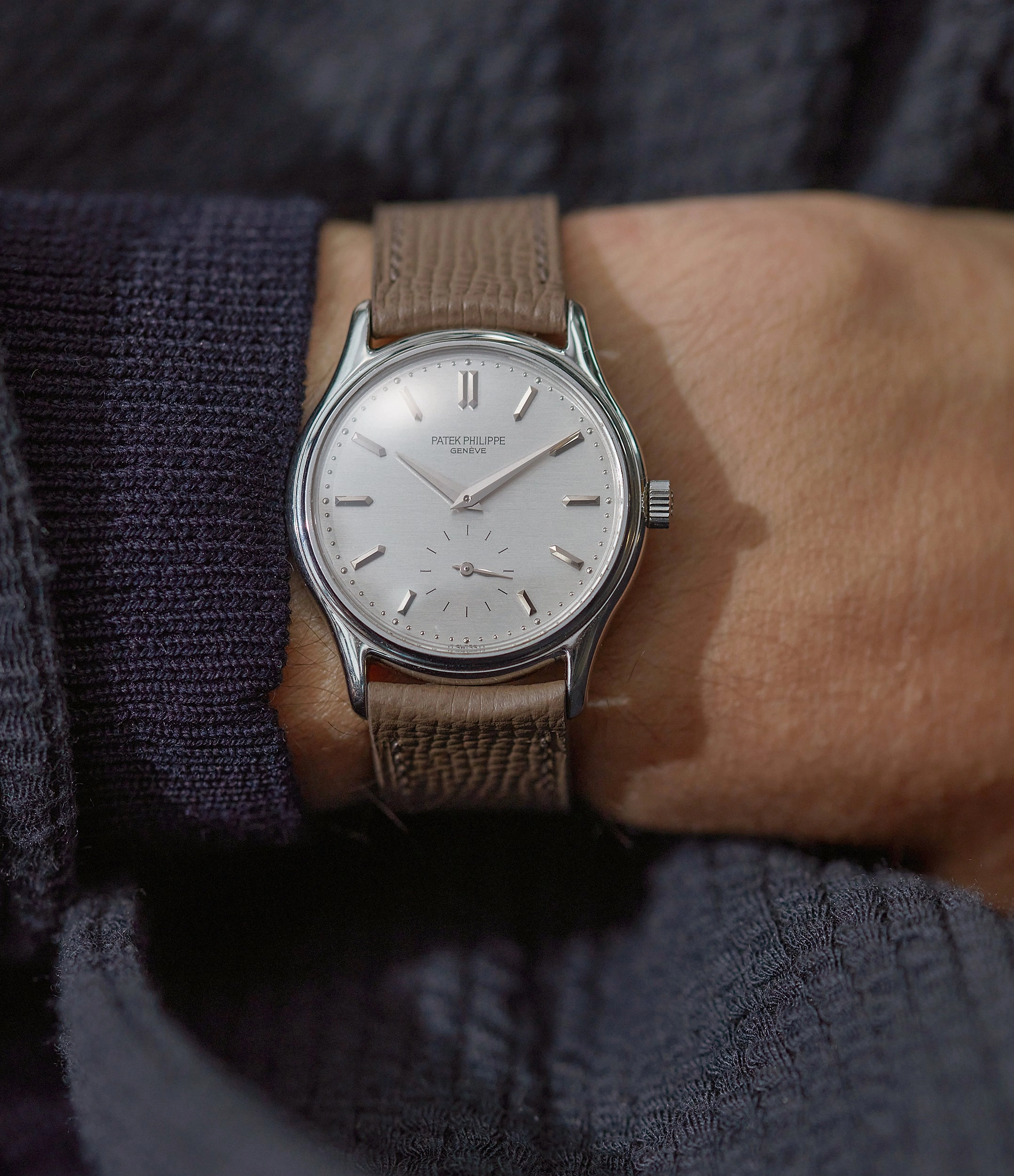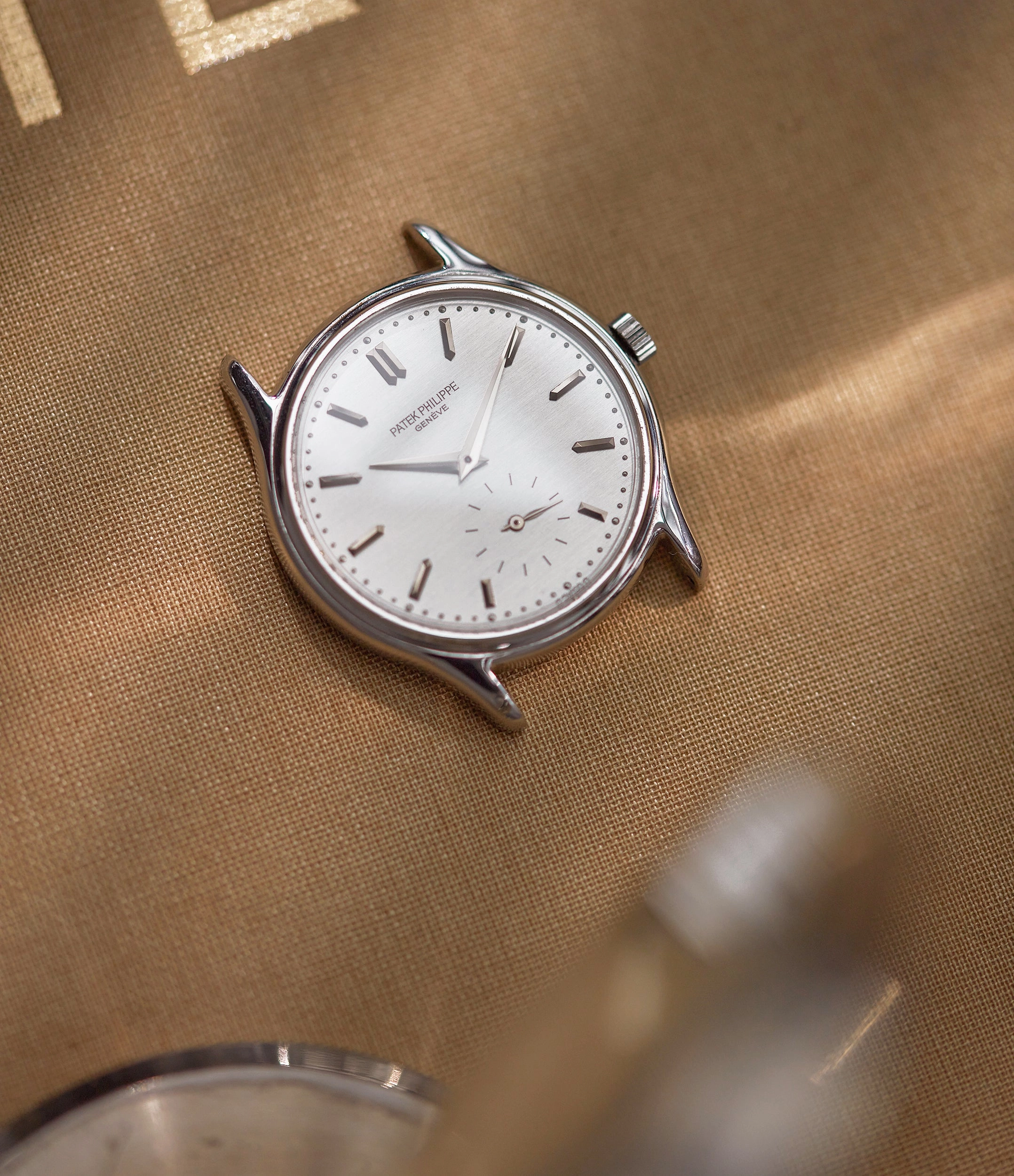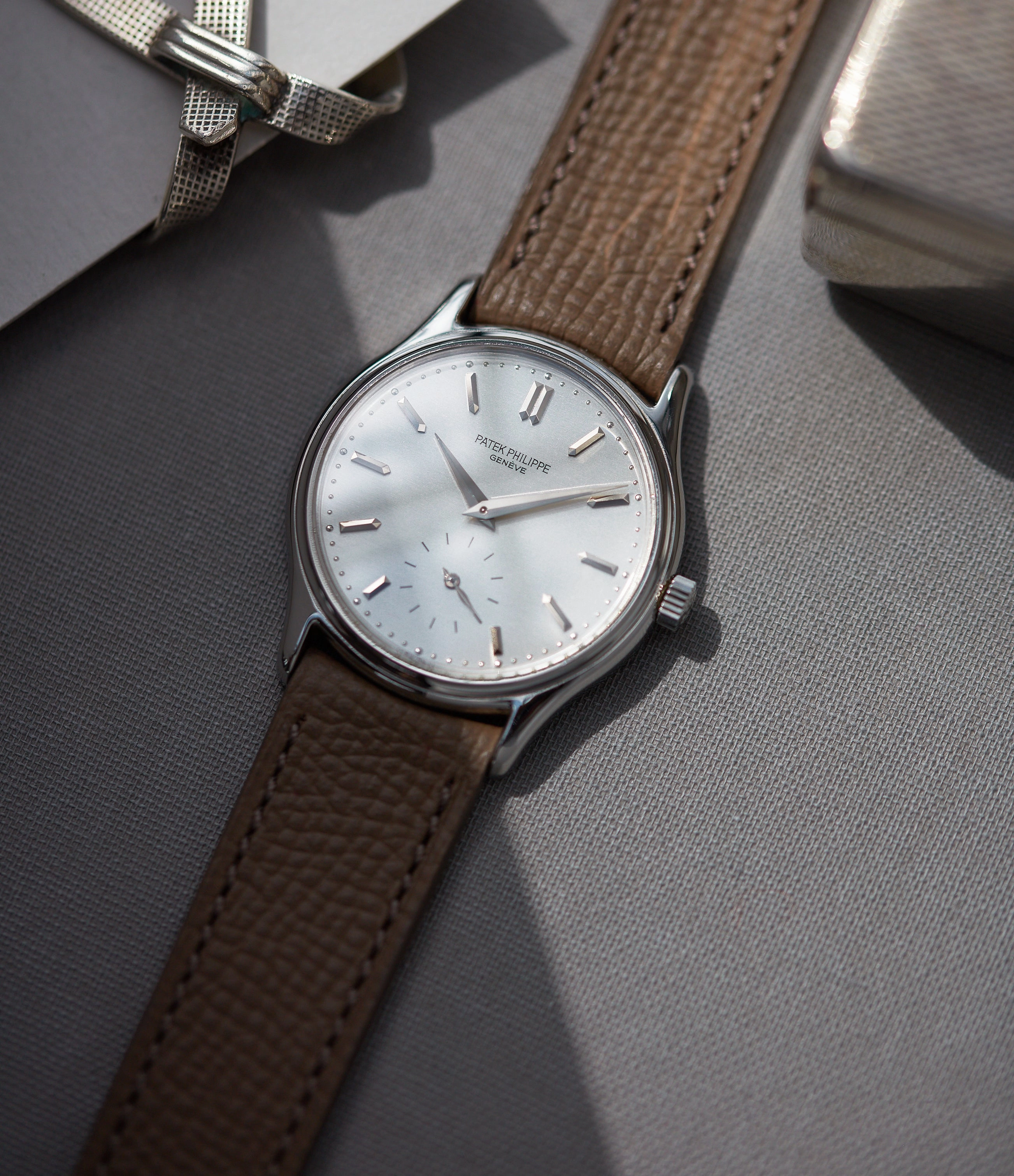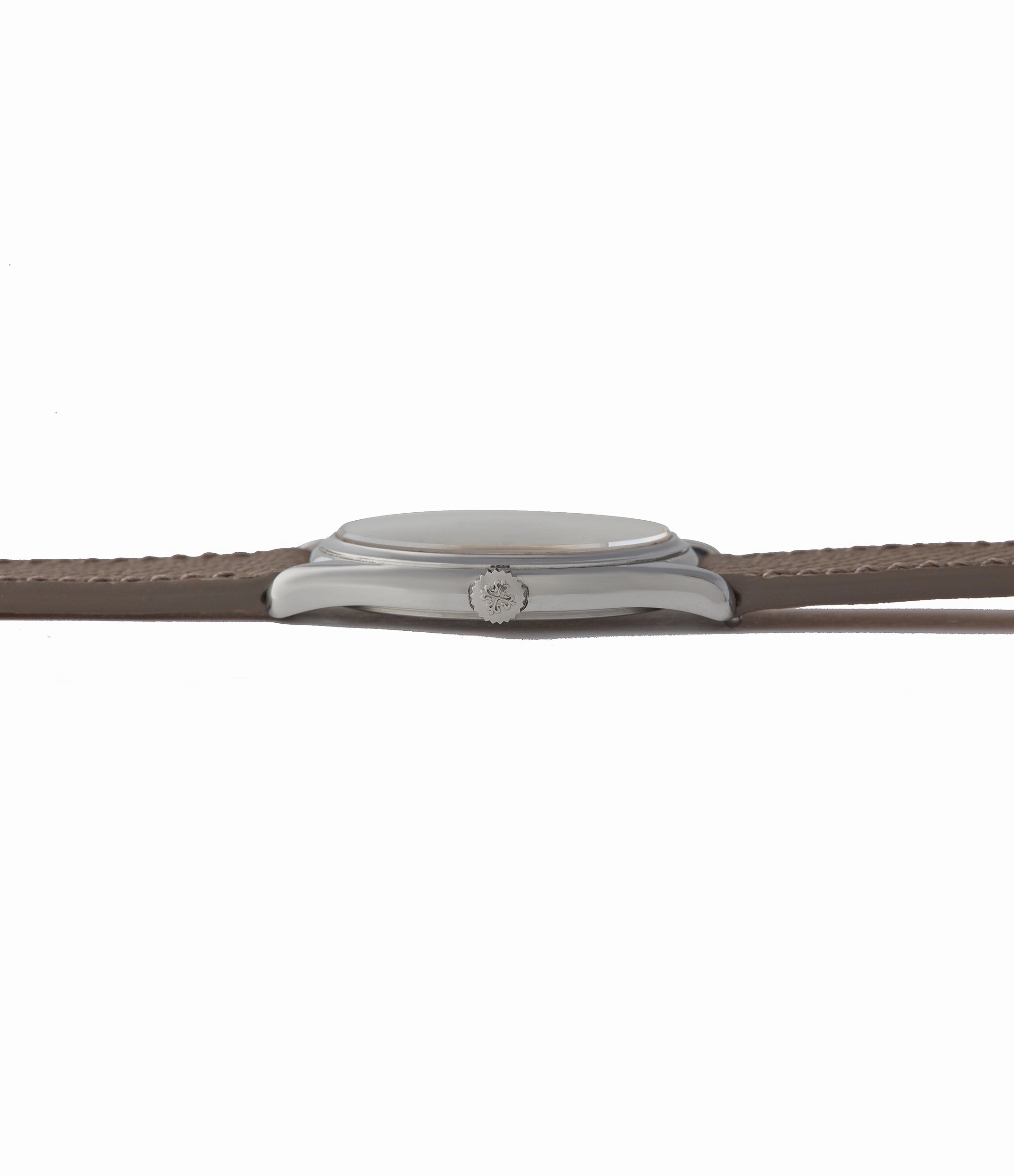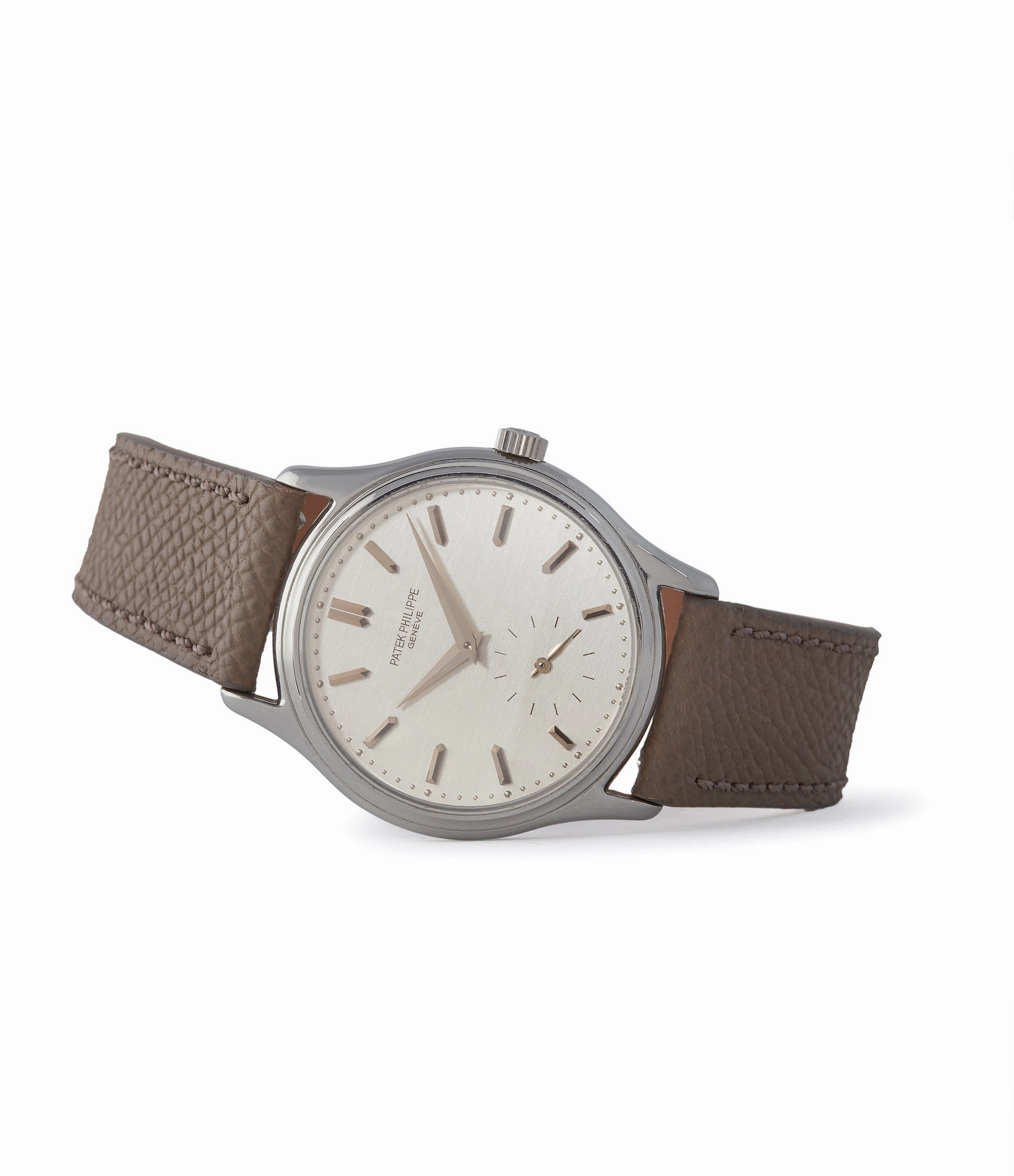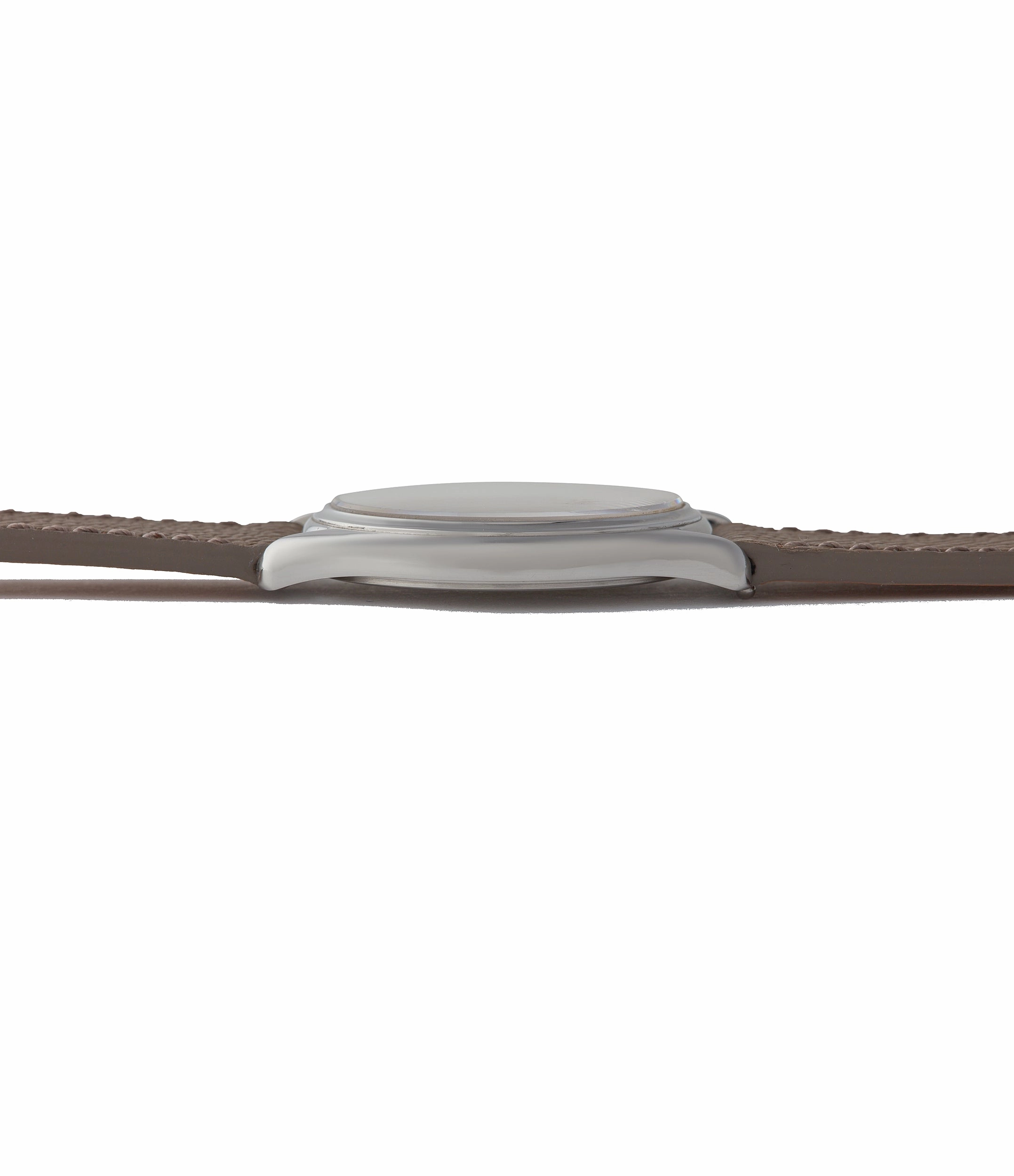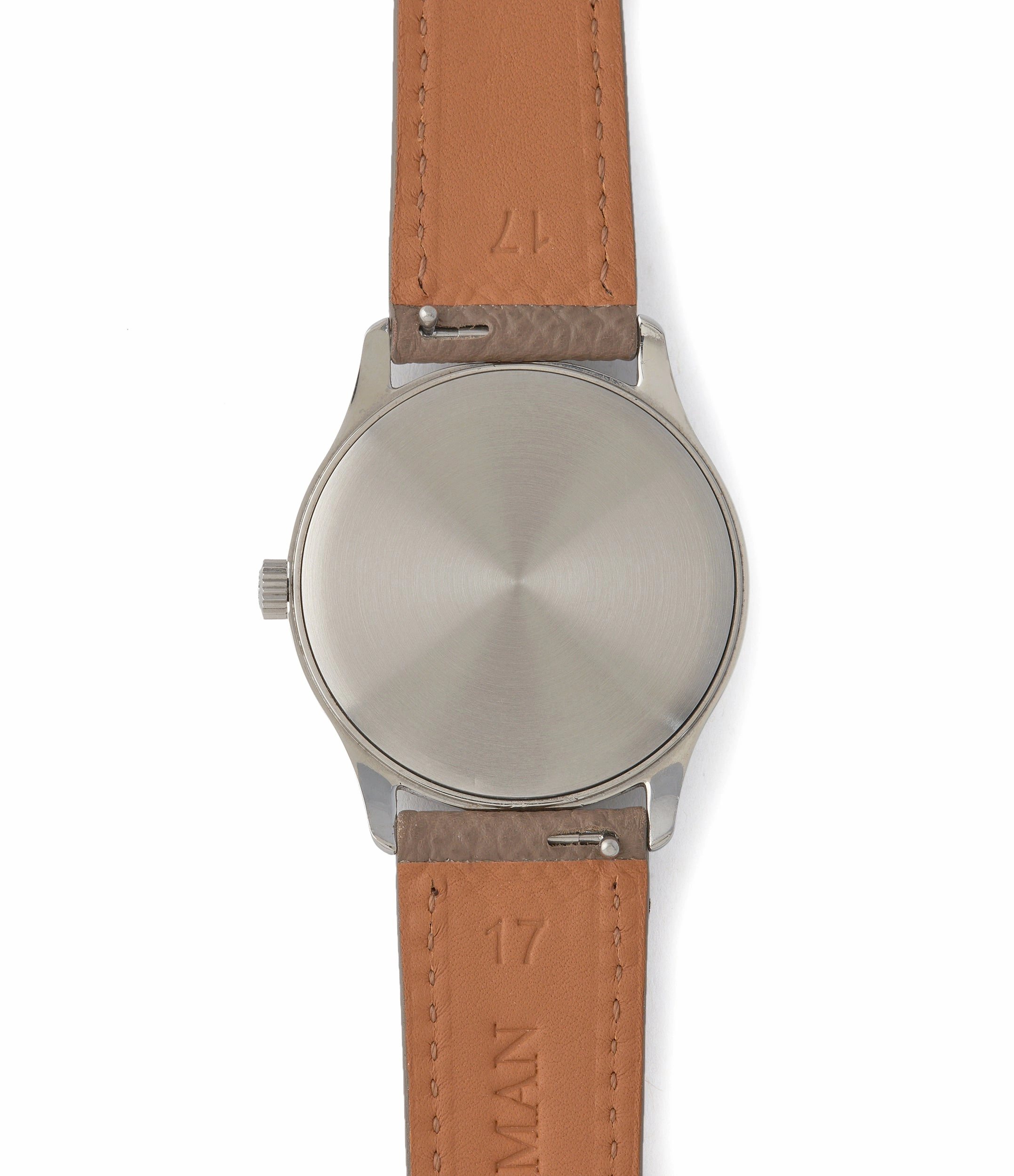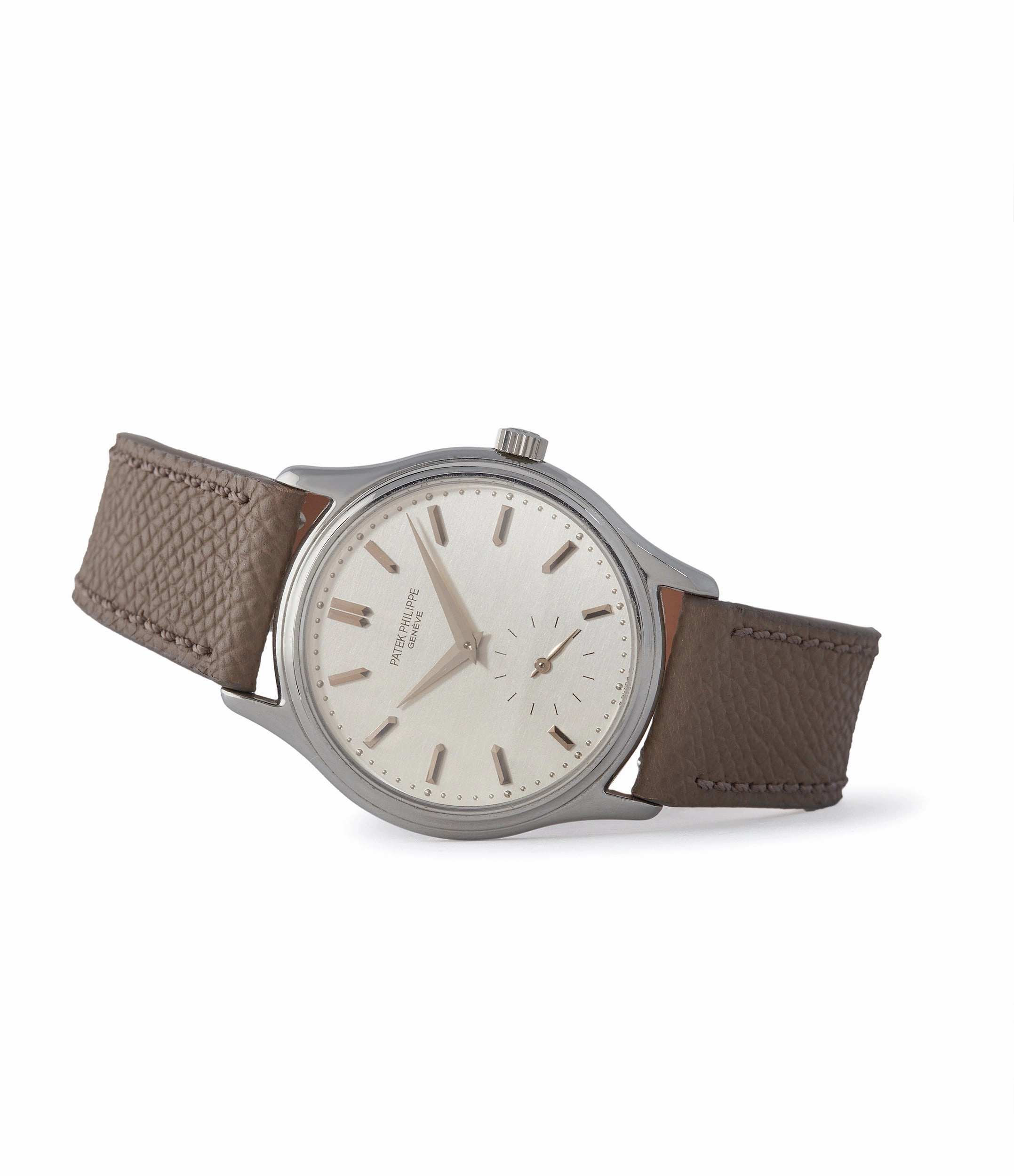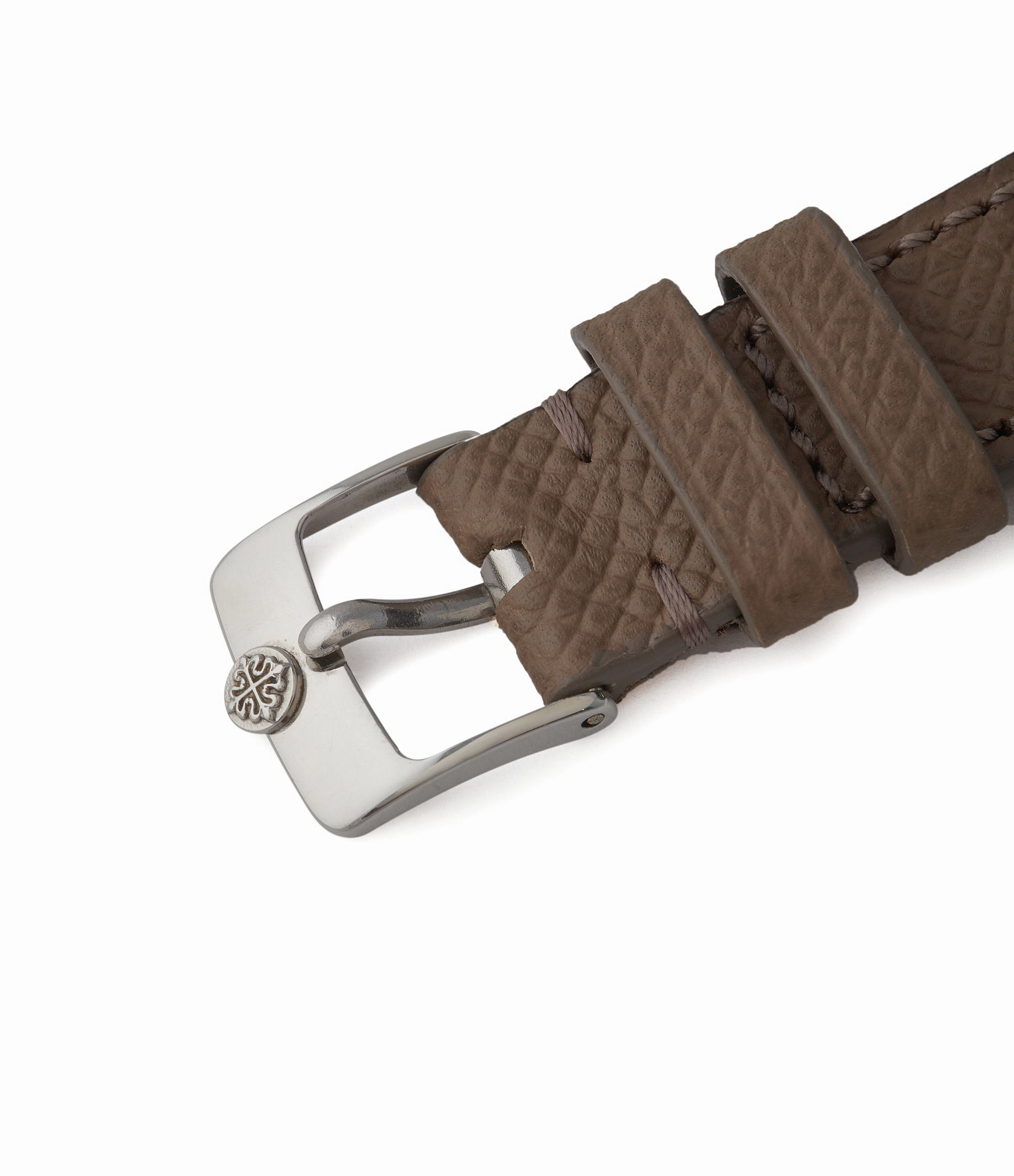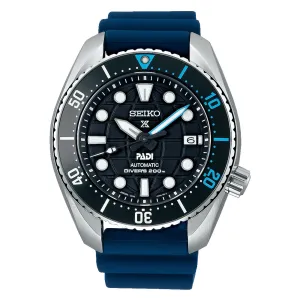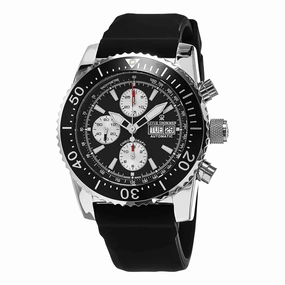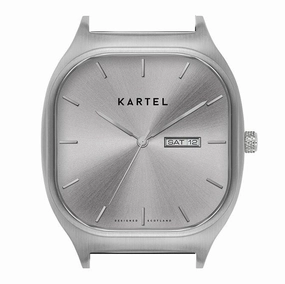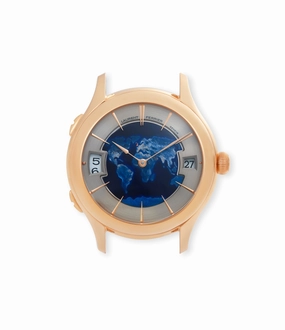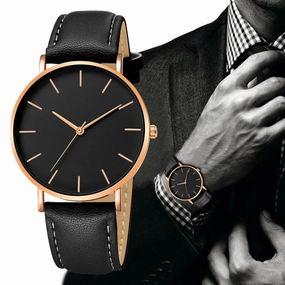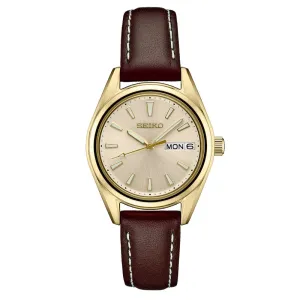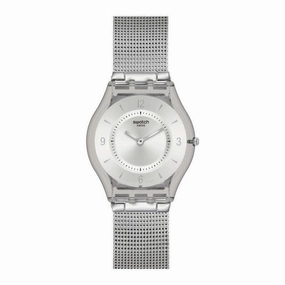This stainless steel Calatrava 3923 was made exclusively for the Japanese market, with a design inspired by Patek Philippe's vintage pieces. Slender and restrained, it is an elegant dress watch, created in one of the manufacture's most elusive and desirable metals.
A HistoricLineage
First introduced in 1932, the Calatrava reference 96 was one of the earliest wristwatches ever released by Patek Philippe. The manufacture had just been purchased byCharles and Henri Stern, andthis was the first model they released, with the intention of breathing a new life into the Genevan brand. Looking back, this original design is considered by many as the ultimate blueprint for a time-only dress watch.Since its inception, the Calatrava has taken on many different forms, with some of the vintage configurations having become particularly sought after by collectors.
The Patek Philipperef. 3923 was in production between 1986 and 1999, recreating the lines of the original ref. 96, from half a century earlier.The standard production model was available in yellow and rose gold. However, Patek Philippe also produced a handful of pieces in stainless steel,exclusively for the Japanese market. It is believed that this was done at therequest ofIsshin Tokei Co. Ltd., one of the brand's retailers in Tokyo.
The Design
This Patek Philippe 3923leans into the classic aesthetic embodied by Patek Philippe, taking many aesthetics cues from the manufacture's vintage pieces.Its silver dial features subtle vertical brushing throughout,whichcreates some interesting effects when the watch interacts with the light at different angles, whilst on the wrist. The applied hour indexes are made out of white gold, with multiple facets, which complement the style of the hour, minutes and seconds hand.
The "Patek Philippe Genve" signature features subtle serif details, which have now been lost on current pieces from the manufacture, further imbuing this piece with a distinctive "neo-vintage" aesthetic. In particular, the accent on the "" of "Genve" is a feature most attributed to the brand's earliest pieces.
The stainlesssteel case features an amorphous shape, with astepped bezel and curved lugs, reminiscent of those found on some vintage pieces. At 31.5mm in diameter, with 37mm lug to lug, the proportions of the Calatrava are perfectly balanced, helping it fulfil its role as a classic dress watch. The curvedlugs, as well as the relatively large 17mm lug width, help thewatch feel larger on the wrist than its dimensions would otherwise suggest. With a thickness just under 7mm, it also hugs the wrist, in a way that is both comfortable and elegant. The caseback features a circular engraving.
The movement
This Patek Philippe 3923is powered by the manual-winding caliber 215 PS,which beats at 28,800 vibrations per hour and offers a 44-hour power reserve.The movement is subtly finished,with chamfering on some of the angles, as well as polishing and decoration, in the form of Geneva striping.
This movement carries theGeneva Seal, which is unique in its accreditation as it focuses on the art of decorating a movement with finesse and skill,in the style of Genevan watchmaking.
The Set
This Patek Philippe ref. 3923is accompanied by an Extract from the Archives, which confirms that the watch was manufactured in 1987, and sold in February of the same year.It comes on one of ourtaupe grained calfskin straps, and is also accompanied by a redPatek Philippe alligator strap and stainless steel Patek Philippebuckle.
If sold within the United Kingdom, thisPatek Philippe3923will be subject to 20% VAT.Viewings are currently suspended for the time being.
Closer look
| Brand: | Patek Philippe |
| Model: | Calatrava ref. 3923 |
| Movement: | manual winding caliber 215 PS |
| Functions: | hours, minutes, seconds |
| Features: | closed caseback,made for Japan |
| Case: | 31.5mm in diameter, 37mm lug to lug stainless steel |
| Crystal: | sapphirefront |
| Strap: | taupe grained calfskin straps, redPatek Philippealligator strap, stainless steelPatek Philippebuckle |
| Lug width: | 17mm |
| Year: | 1987 |
| Box & papers: | Extract from the Archives(manufactured and sold in 1987) |

